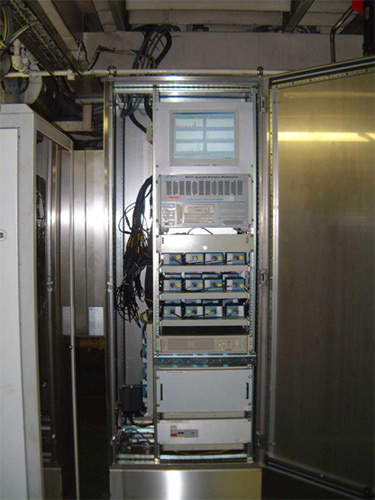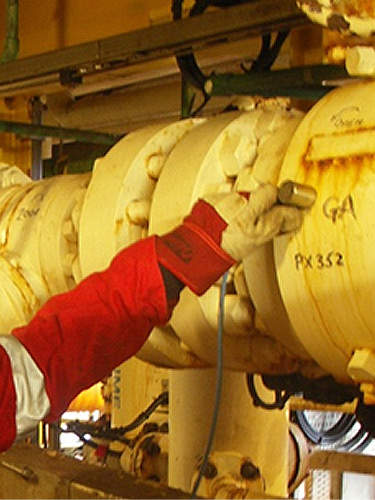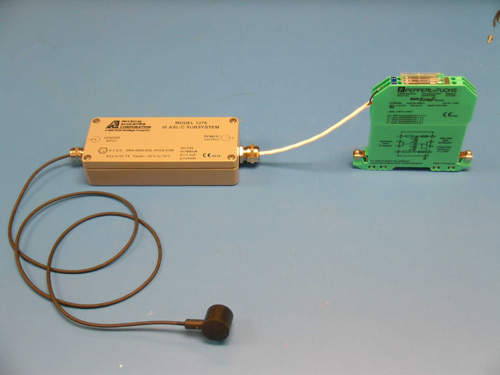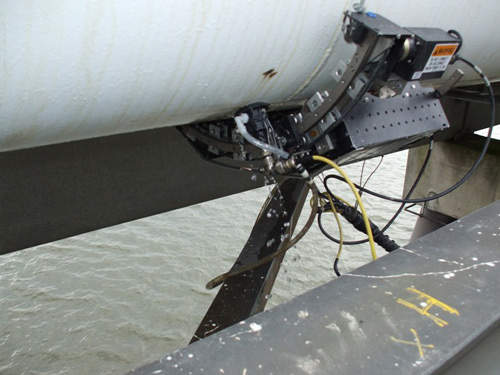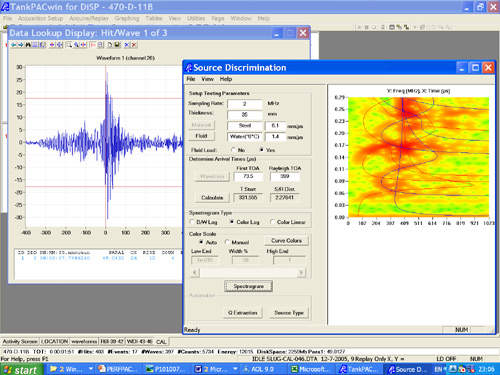Mistras Physical Acoustics has more than 25 years’ experience in the UK, providing structural integrity monitoring services and instrumentation, acoustic emission, and non-destructive testing. Critical areas on offshore structures have been continuously monitored since 2001, providing the client with real-time information on strain and crack-growth, accessible via secure network.
As part of the worldwide publicly listed Mistras Group (NYSE-MG), the company has access to expertise and solutions for almost any inspection or structural integrity situation.
Total offshore monitoring services
Mistras Physical Acoustics provides continuous monitoring solutions for a wide range of applications in the oil and gas, power, and civil sectors. Applications to process plants include pressure vessels, lines, flexible risers, exchangers, valves, slow moving bearings, transformers and switchgear, and both steel and concrete offshore platforms.
Our monitoring systems fuse together the information from multiple sensor types to provide a fully integrated solution, providing near real-time information to the client. Sensors employed include strain, displacement, vibration, seismic, ultrasonic, and acoustic emission (crack growth). Any static or dynamic sensor type may be supported.
Continuous structural integrity monitoring systems installed by Physical Acoustics in the 1990s are still supported today, as are offshore structural monitoring systems installed since 2001. Plant located in Zone 0 hazardous areas is monitored using our industry-leading intrinsically safe instrumentation.
Through-valve loss control and safety for the offshore industry
The Physical Acoustics portable and intrinsically safe 5131-VPAC system, developed with British Petroleum (BP), is widely used in refineries, offshore platforms, power and process plants for estimating through-valve gas losses to flare and for testing the integrity of safety critical shutdown and blow-down valves. A joint Shell / BP / PAL programme further extended the application of VPAC technology to large ball valves in both gas and liquid service, with soft or hard seats, allowing its use for critical valve integrity testing to help meet the SI 1029 requirements.
More than 1,000 systems are in routine use, with reported cost savings resulting from identifying the 1% of valves that cause 70% of losses ranging from $1m to more than $10m per site. A measurement taking seconds is converted into a through-valve estimated leakage rate using a formula developed by best-fit to physical mass flow tests on more than 800 leaking valves removed from service over a ten-year period. Physical Acoustics provides surveys using fully qualified and experienced VPAC test engineers, systems (for sale or rental), offshore training, and application support.
Leak rate monitor and gas leak detector
Monitoring leakage rates through safety critical valves when put into the closed position during emergency is an increasingly specified requirement. To meet this need the VPAC-1278, two-wire, Zone 0 certified, permanently installed leak rate monitor, was developed. The VPAC-1278 provides operations with the leak-rate information needed real-time to ensure valves are functioning as required, helping to ensure plant safety.
A third system, the airborne GDU, instantaneously detects leakage of gas from pressurised equipment to atmosphere, and being totally independent of wind direction, the GDU provides effective back-up to hydrocarbon systems, which require the gas to reach a detector. This is especially important in an offshore high-wind environment.
Corrosion mapping and automated ultrasonic inspection
Automated ultrasonic corrosion mapping tools developed, supplied and operated by Physical Acoustics are the result of more than 15 years’ continuous development. The Large Structure Inspection system is capable of mapping 15m² – 150m² per day on vessels, pipe-work and structures, and more than one hundred systems are in daily use worldwide.
The Pocket-UT Mini-Scanner is a battery-powered small portable scanner, ideal for mapping small areas in difficult to access locations. Both systems are driven by powerful magnetic tractors capable of climbing to otherwise inaccessible areas, saving scaffold and other access costs required for manual inspection.
Offshore acoustic emission services
Applications of acoustic emission (AE) in the offshore environment are found on steel and concrete structures, process equipment, tube skids, and slow-moving bearings.
Acoustic emission (AE) is the transient acoustic stress-wave that results from change in materials, for example crack growth, corrosion and local yielding. Like an earthquake, the signal travels from the epicenter in all directions, and is detected using surface-mounted sensors. The difference between AE and seismology is the relatively very small signal amplitude from AE and the frequency range required for detection, which extends into the megahertz region, above most environmental noise sources.
AE is used to test and monitor many materials, including metals, concrete, and composites. AE gives information on what is happening inside materials and structures in real-time, using relatively few widely spaced sensors to locate and monitor the source of developing flaws over a large area.
Static plant condition monitoring software
With client-driven development of more than 20 years, the software from our plant condition monitoring systems division (PCMS) integrates data from multiple data sources, including maintenance, inspection, planning, design, and risk-based inspection (RBI). PCMS has an optional integrated ‘real-time’ RBI calculator, driven by the API RBI codes, which may be used as an alternative to ‘running’ a separate RBI system and importing the results.
The benefit to clients is the most advanced and efficient system of its type, helping them to comply with all standards and ‘closing the loop’ between inspection and maintenance without the need for extensive and costly third-party RBI studies prior to every outage.


